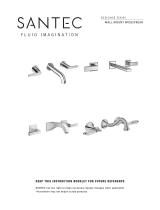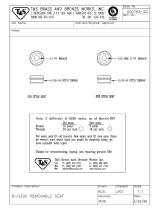
19
9.3) Make sure that the accelerator lever is in position "0".
Only with a cool engine, set the ‘choke lever’ upwards, on the left
side in starting position (Fig. c); when engine is warm or in case
of high ambient temperature, set this lever downward in working
position (Fig f).
9.4) Pull sharply on the starting rope and then release slowly; the
engine before ignition, may require more than one operation (Fig. d).
Do not over-extend the starting rope and always release it slowly
once the motor is running; a sudden release could damage the
starting system.
If the engine does not start, do not repeatedly pull the starting
rope with the ‘choke lever’ in start position. This could create a
fuel excess in the cylinder and make ignition more difficult. In
this case, set the lever in working position and repeat the starting
operation. Once started change the speed of the engine twice to
allow the remaining air to leave the carburettor.
9.5) Just after starting, accelerate the engine gradually before
starting any activity, then set the accelerator lever in "1" position
(Fig. e) till the ‘choke lever’ automatically returns, then set it again
in "0" position.
9.6) Allow the engine to warm up for approximately 2 minutes then
set the accelerator lever in "1" position of maximum acceleration
and start to drill.
9.7) To stop the engine move the “ON/OFF” switch to the “OFF”
position.
9.8) Idling speed adjustment: if necessary, adjust the idling
screw (Fig. f), so that the engine maintains a stable idling speed
(2800 rpm).
9.9) Carburettor adjustment
The carburettor has been factory previously adjusted.
The control system of the gas emissions applied to this motor
consists of a carburettor and ignition system which guarantee
the best results.
The carburettor is so adjusted
to provide the air/fuel mixture
required to achieve low con-
sumptions and low emissions
of injurious gas.
The engine will perform at its
optimum after a “running-in”
period of approximately 200
drilling operations.
e)
: speed increases
: speed decreases
d)
c)
f)
b)
























